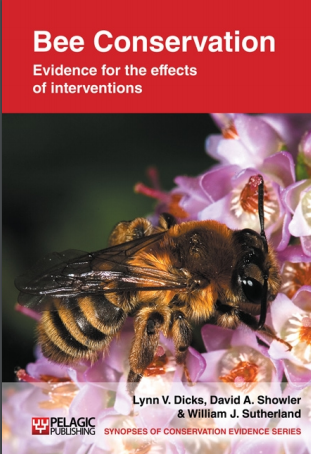Sow uncropped arable field margins with an agricultural nectar and pollen mix
-
Overall effectiveness category Awaiting assessment
-
Number of studies: 6
View assessment score
Hide assessment score
How is the evidence assessed?
-
Effectiveness
not assessed -
Certainty
not assessed -
Harms
not assessed
Study locations
Supporting evidence from individual studies
In a replicated trial (five plots) of field margin seed mixtures on a farm in North Yorkshire, Carvell et al. (2006) found that short-tongued bumblebees (B. terrestris, B. lucorum and B. pratorum) strongly preferred plots of annually sown cover crops including borage Borago officinalis and common melilot Melilotus officinalis over perennial wildflower seed mix. Total bumblebee abundance was higher on the annual agricultural nectar mix. On average 70% of pollen collected by buff-tailed bumblebee workers B. terrestris sampled in this study was from borage.
Study and other actions testedIn a replicated controlled trial in thirty-two 10 km grid squares across England (Pywell et al. 2006), there were significantly more bumblebee species and more individuals on field margins sown 1-2 years previously with a pollen and nectar mix (average >3 species and 86 bees/transect) than on grassy margins (average 1.3-1.4 species and 6-8 bees/transect) or cropped margins (average 0.1 species and 0.2 bees/transect). There were more bumblebee individuals, but not more bumblebee species on pollen and nectar mix margins (average 86 bees/transect) than on wildflower-sown margins (43 bees/transect). The abundance of long-tongued bumblebees (mostly common carder bee B. pascuorum and garden bumblebee B. hortorum) was positively correlated with the number of pollen and nectar-mix agreements in each 10 km square.
Study and other actions testedIn a replicated controlled trial at six sites across central and eastern England, Carvell et al. (2007) found that 6 m margins of cereal fields sown with a nectar flower mixture supported significantly more foraging bumblebees (species and individuals) than cropped, grassy or naturally regenerated unsown field margins. Visitors included the nationally rare long-tongued species Bombus ruderatus and B. muscorum.
The nectar flower seed mixture was based on four agricultural legumes (red clover, Alsike clover Trifolium hybridum, bird's-foot trefoil Lotus corniculatus and sainfoin Onobrychis viciifolia). Unlike a wild flower seed mixture in the same study, it supported more bumblebees than other treatments from the first year of the study. However, relative to a wild flower mixture, this mixture provided low numbers of flowers in May and June, when bumblebee queens of late-emerging species are foraging. It also showed a decline in flower numbers in year three, when it did not support significantly more bumblebees than the wild flower seed mixtures.
Study and other actions testedIn a replicated, controlled study (2005-2008), across 41 farms in England and Scotland, the average number of worker bumblebees was greater on margins where legume-rich seed mix was established than on other field margins (grassy margins or track edges; Edwards 2008). No formal statistical analysis were performed on these data. There was an observed decline in the relative number of foraging worker bumblebees on these margins after they had been established for more than three years (data from five farms).
Study and other actions testedArable margins sown with legume-grass seed mix had higher species richness of bumblebee forage plants (almost 100% cover of Alsike clover and red clover one year after establishment) over four years, compared to naturally regenerated margins on farmland at Romney Marsh, Kent, England (Gardiner et al. 2008). Bee visits were not reported in this study. Fixed-time transect walks in the clover margins are reported elsewhere (Edwards & Williams 2004) to have demonstrated a 300-fold increase in bumblebee forager numbers in the margins planted with clover, but unfortunately, no control count was carried out for comparison. However, the clover-sown plots were invaded by perennial grasses in the third and fourth years of this study, and flower numbers fell substantially.
Study and other actions tested
Where has this evidence come from?
List of journals searched by synopsis
All the journals searched for all synopses
This Action forms part of the Action Synopsis:
Bee Conservation
Bee Conservation - Published 2010
Bee Synopsis





)_2023.JPG)














